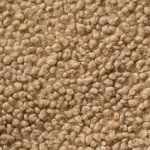Are you experiencing a spinning propeller on your boat? This can be a frustrating and potentially dangerous issue, but don’t worry – fixing a spun prop is easier than you might think.
In this article, we’ll guide you through the steps to repair your spinning propeller and get your boat back on the water in no time.
First, we’ll help you identify if you have a spun prop and what tools you’ll need to fix it.
Then, we’ll walk you through the process of removing, inspecting, and repairing the propeller.
Finally, we’ll show you how to reinstall the propeller and test run your boat to ensure everything is working properly.
With our easy-to-follow steps, you’ll be able to fix your spun prop and enjoy a smooth ride on the water once again.
Table of Contents
Identifying a Spun Prop
You may not realize it yet, but if your boat is vibrating excessively and struggling to reach its maximum speed, it’s likely you have a spun prop on your hands. A spun prop happens when the propeller blades are bent or damaged, causing them to become unbalanced. This unbalance creates excessive vibration, which can be felt throughout the entire boat.
Another way to identify a spun prop is to look for a decrease in speed and an increase in fuel consumption. When a propeller is damaged, it has to work harder to move the boat, resulting in a decrease in speed and an increase in fuel consumption. While these signs may also indicate other issues with your boat, it’s always best to inspect the propeller first, as it’s an easy fix compared to other potential problems.
To confirm whether you have a spun prop, you should inspect the blades for any visible signs of damage, such as bends or chips. You can also have a professional inspect the propeller, as they can often identify small damages that may not be visible to the untrained eye.
Once you’ve identified a spun prop, it’s time to move on to the next step: repairing it.
Tools You Will Need
To complete the repair, gather up the necessary tools. You will need a prop wrench, a socket set, a hammer, and a block of wood. The prop wrench is essential for removing the nut that holds the propeller in place. A socket set will be needed to remove the propeller from the shaft. You will also need a hammer and a block of wood to tap the propeller off the shaft if it is stuck.
Now that you know the tools you need, it’s time to get to work. The process of fixing a spun propeller can be daunting, but with the right tools, it is a straightforward repair. To make things even easier, we have created a table that outlines the necessary tools and their uses.
| Tool | Use |
|---|---|
| Prop wrench | Removes nut holding propeller in place |
| Socket set | Removes propeller from shaft |
| Hammer and block of wood | Taps propeller off shaft if stuck |
Gathering these tools may take some time and effort, but once you have them, the repair process will be much smoother. Remember to follow the instructions carefully and take your time to ensure that everything is done correctly. With the right tools and a little patience, you can fix your spun propeller and get back out on the water in no time.
Removing the Propeller
With the prop wrench and socket set in hand, it’s time to get down to business and remove the stubborn propeller from the shaft. Here are the steps to follow:
-
First, locate the cotter pin that holds the propeller nut in place. Use a pair of pliers to straighten the ends of the cotter pin and then remove it from the nut.
-
Use the prop wrench and socket set to loosen the nut holding the propeller in place. Turn the wrench counter-clockwise to loosen the nut. If the nut is difficult to loosen, you can use a prop puller to help remove the propeller.
-
Once the nut is removed, slide the propeller off the shaft. Be careful not to damage the key that is located between the propeller and the shaft.
-
Finally, inspect the propeller and shaft for any damage or wear. If there are any issues, they’ll need to be addressed before re-installing the propeller.
By following these steps, you should be able to remove your spinning propeller with ease. Remember to take your time and be careful not to damage any of the components. With the propeller removed, you can now move on to repairing it or replacing it altogether.
Inspecting the Propeller
Now that the propeller has been removed, it’s important to carefully inspect it for any signs of wear or damage. This step is crucial in ensuring that your propeller is functioning properly and that it won’t cause any issues when you’re back on the water. The inspection process is relatively simple and can be done with just a few tools and some keen observation skills.
To inspect your propeller, start by examining the blades for any visible signs of damage, such as chips, cracks, or bends. Use a flashlight to get a better look at the entire blade surface, checking for any nicks or dings that could affect performance. If you notice any damage, it’s best to replace the propeller rather than trying to repair it.
Next, take a closer look at the hub of the propeller. This is where the blades attach to the propeller shaft, and any damage here could cause serious issues. Check for any signs of wear or corrosion, and ensure that the hub is securely attached to the blades. You can also use a propeller pitch gauge to measure the pitch of each blade to ensure they are all the same.
To make the inspection process easier, we’ve created a handy table to help you keep track of any issues you notice while inspecting your propeller. Use the table to note any damage, wear, or other issues you observe during the inspection, so you can easily refer back to it later. By taking the time to carefully inspect your propeller, you’ll be able to catch any potential problems before they cause serious damage to your boat or leave you stranded on the water.
| Blade Number | Damage | Wear | Other Issues |
|---|---|---|---|
| 1 | |||
| 2 | |||
| 3 | |||
| 4 |
Repairing the Propeller
If your propeller has been damaged, it may be possible to mend it before hitting the water again. One of the first steps in repairing your propeller is to remove it from the boat. Once you’ve done this, you can assess the extent of the damage.
If the damage is minor, you may be able to repair it yourself. To repair a propeller, you’ll need to file down any rough or jagged edges with a metal file. This will help to smooth out the surface of the propeller and prevent any further damage from occurring. Once you’ve filed down the edges, you can use a piece of sandpaper to smooth out the surface even further.
Be sure to sand both sides of the blades evenly to prevent any imbalance. If the damage to your propeller is more severe, you may need to take it to a professional for repair. In some cases, the damage may be too extensive to repair, and you may need to replace the propeller altogether.
However, by taking care of your propeller and repairing any damage as soon as it occurs, you can extend its lifespan and ensure that your boat runs smoothly on the water.
Reinstalling the Propeller
Once the propeller’s been repaired or replaced, it’s time to reinstall it and get back on the water for some smooth sailing. Here are some easy steps to follow when reinstalling your propeller:
-
Begin by applying a thin layer of marine grease to the propeller shaft. This’ll help prevent corrosion and make future removal easier.
-
Align the splines on the propeller with those on the shaft and slide the propeller onto the shaft. Make sure the propeller is properly seated on the shaft and spins freely.
-
Use a torque wrench to tighten the propeller nut to the manufacturer’s specifications. This’s important to ensure proper alignment and prevent the propeller from coming loose while in use.
Once the propeller’s securely attached, start the engine and ensure that the propeller’s spinning smoothly. If you notice any vibrations or unusual noises, stop the engine immediately and check that the propeller’s properly installed.
With these simple steps, you can quickly and easily reinstall your propeller and get back to enjoying your time on the water.
Test Running Your Boat
Now that you’ve reinstalled your propeller, it’s time to test run your boat to ensure proper operation.
Before starting your engine, make sure to visually inspect the propeller and surrounding area for any signs of damage or debris.
Once you’ve started your engine, make any necessary final adjustments to ensure a smooth and safe ride.
Checking for Proper Operation
To ensure proper operation, always check your propeller for any damage or defects before use. Start by inspecting the blades for any nicks, dents, or cracks. If you spot any damage, replace the propeller immediately.
Continuing to use a damaged propeller can cause further damage to your boat’s engine and shaft, which will result in costly repairs. Next, check to make sure your propeller is spinning smoothly. If you notice any wobbling or vibration while the engine is running, this may indicate that your propeller is bent or out of balance.
In this case, you should have your propeller professionally repaired or replaced. Remember, a properly functioning propeller is essential for safe and efficient boating, so don’t take any chances with a damaged or poorly operating propeller.
Making Final Adjustments
Don’t forget to double-check that all adjustments have been made correctly before taking your boat out on the water. Making final adjustments to your propeller is a crucial step in ensuring that it works efficiently and effectively.
Here are some tips to help you make the necessary final adjustments:
-
Use a propeller wrench to tighten the nut or bolt that secures the propeller to the shaft. You should make sure that it’s tightened to the manufacturer’s specifications.
-
Check the propeller’s pitch angle. This can be done with a pitch gauge. Adjust the pitch angle if necessary to ensure that it’s within the manufacturer’s recommended range.
-
Finally, test the propeller in the water to make sure that it’s functioning properly. If you notice any issues, such as vibrations or propeller cavitation, you may need to make further adjustments.
By taking the time to make these final adjustments, you can ensure that your boat runs smoothly and efficiently on the water. So, don’t rush through this step and make sure that you’ve made all the necessary adjustments before setting out for your next adventure on the water.
- Tetron Fabric for Marine Applications: Durability and Use Cases - June 18, 2025
- Tetron Fabric for Outdoor Furniture: Weather Resistance and Care - June 18, 2025
- Tetron Fabric for Wall Coverings: Style and Application Tips - June 18, 2025




